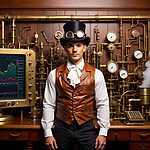
How to Leverage the Decoy Effect Marketing Strategy to Influence Customer Choices
May 17, 2025
Picture this: a customer stands frozen in the aisle, staring at three options. Their minds race, weighing the pros and cons of each choice. Suddenly, clarity strikes, and they confidently reach for one specific product. What happened? Was it the price? The packaging? Or was it something far more subtle—an invisible hand nudging them toward a decision they didn’t even realise they were making? Welcome to the decoy effect, a marketing strategy so deceptively simple yet profoundly powerful that it can alter the choices of millions without them even noticing.
In a world where customers are overwhelmed by options, the decoy effect isn’t just a tool—it’s a weapon. By strategically introducing a carefully designed third option, businesses can influence how we perceive value and ultimately steer us toward their desired outcome. But this isn’t just about sales; it’s about understanding the very mechanics of human decision-making. It’s about harnessing psychology, behavioural science, and even a touch of illusion to reshape how we see the world.
Prepare to dive deep into the currents of human behaviour, where logic meets bias and perception becomes reality. This guide will not only explain the decoy effect marketing strategy but also explore its origins, applications, and psychological underpinnings, making it one of the most fascinating and effective tools in modern business.
The Decoy Effect: A Subtle Manipulation of Perception
At its core, the decoy effect is about comparison. Humans, as rational as we like to believe we are, make most of our decisions not in isolation but in context. We evaluate options relative to one another, not in absolute terms. This is where the decoy effect marketing strategy shines. By introducing a third, strategically inferior option (the “decoy”), businesses can skew the perception of the other two choices, making one appear vastly superior to the other.
Consider a famous example from behavioural economics: a magazine subscription. You’re presented with three choices:
- Option A: Online-only subscription for \$59
- Option B: Print-only subscription for \$125
- Option C: Print + Online subscription for \$125
At first glance, Option B seems irrational—why would anyone choose print-only when they can get both print and online for the same price? But that’s precisely the point. The presence of Option B makes Option C—the combination offer—seem like a no-brainer. Without Option B, customers might have hesitated between the cheaper online option and the more expensive combination. However, with Option B in the mix, the decision is clear: Option C becomes the obvious choice.
This is the magic of the decoy effect marketing strategy. It’s not about adding value—it’s about framing value. It’s about nudging customers in the direction you want them to go, without them even realising they’ve been nudged.
Psycho-Logic: Why the Decoy Effect Works
To understand the decoy effect, we must delve into the quirks of human psychology. At its heart lies our innate aversion to making decisions in isolation. Left with two options, we often struggle to weigh their merits. But when a third option is introduced—one that pales compared to one of the original two—it acts as an anchor. Suddenly, the superior choice becomes glaringly obvious.
Behavioural scientists attribute this to a cognitive bias known as “asymmetric dominance.” The decoy is asymmetrically dominated because it’s worse in every way compared to one option but only slightly better compared to the other. This asymmetry creates a psychological shortcut: instead of evaluating each option on its own merits, we latch onto the one that clearly “wins” against the decoy. It feels like a logical decision, but in reality, we’ve been gently herded toward a predetermined outcome.
But the decoy effect doesn’t rely on logic—it also taps into emotion. By making one option seem like a compromise or a missed opportunity, it plays on our fear of loss and our desire to maximise value. The same principle makes “limited-time offers” so enticing: we don’t want to miss out on what feels like an obvious win.
In this way, the decoy effect marketing strategy is as much about perception as it is about reality. It’s not about changing the actual value of the options—it’s about changing how we see them. And in a marketplace driven by perception, that can make all the difference.
Applications of the Decoy Effect: From Pricing to Politics
The decoy effect isn’t limited to magazine subscriptions—it’s everywhere. From fast food menus to tech products, from political campaigns to dating apps, the principles of the decoy effect marketing strategy can be applied across industries and contexts. Let’s explore some of its most compelling applications:
1. Pricing Strategies
Apple is a master of the decoy effect. When introducing a new iPhone model, they often release three versions: a basic, premium, and ultra-premium. With its astronomical price tag, the ultra-premium model acts as the decoy. It makes the premium model seem like a reasonable, even affordable, choice. Without the decoy, customers might have baulked at the high price of the premium model. But with the decoy in play, it becomes the “middle ground” option—a compromise that feels both logical and satisfying.
2. Restaurant Menus
Ever noticed how some menus include outrageously expensive dishes that no one ever orders? These are often decoys. A $300 bottle of wine makes the \$100 bottle seem downright reasonable. A $50 lobster dish makes the \$30 steak feel like a deal. By anchoring our perception of value, these decoys subtly guide us toward higher-priced options without us ever realising it.
3. Political Campaigns
The decoy effect isn’t just about money—it’s about choices. In politics, candidates often use decoys to frame their opponents in a negative light. By introducing a third-party candidate who shares similar policies to one of the main candidates but lacks their credibility or experience, campaigns can split the vote and sway the outcome. It’s a high-stakes game of perception, where the decoy isn’t just a tool—it’s a weapon.
4. Online Shopping
In e-commerce, the decoy effect marketing strategy is often used to nudge customers toward higher-priced bundles. A single product might be priced at $30, while a bundle of two is $50, and a bundle of three is $55. The slight price difference between the two-bundle and three-bundle options makes the latter seem like an incredible deal, even if the customer didn’t originally intend to buy that much. The decoy creates a sense of urgency and value, driving sales and profits.
Ethical Considerations: Is Manipulation Ever Justified?
With great power comes great responsibility. The decoy effect marketing strategy is undeniably effective but raises ethical questions. Is manipulating customers’ perceptions to steer them toward a particular choice fair? Is it ethical to design options that exploit cognitive biases to drive sales? These are not easy questions to answer.
On the one hand, all marketing is inherently about persuasion. From catchy slogans to eye-catching packaging, businesses are constantly vying for our attention and our dollars. The decoy effect is just one more tool in the arsenal—a tool that, when used responsibly, can help customers make better decisions by simplifying complex choices.
On the other hand, there’s a fine line between persuasion and manipulation. When businesses use decoys to push customers toward products they don’t need or can’t afford, they risk eroding trust and damaging their reputation. Companies must tread carefully in a world where transparency and authenticity are increasingly valued. The decoy effect is a powerful tool, but like any tool, it can be wielded for good or for ill.
Conclusion: The Art of Influence
The decoy effect is more than just a marketing strategy—it’s a testament to the power of human psychology. It reminds us that our choices are never as rational or objective as we like to believe and that even the smallest details can profoundly impact our decisions. It’s a tool of influence, a force of persuasion, and a window into the complexities of the human mind.
For businesses, mastering the decoy effect marketing strategy is not just about boosting sales—it’s about understanding people. It’s about recognising the patterns of behaviour that drive our decisions and using that knowledge to create value in subtle and profound ways. It’s about embracing the paradoxes of choice, perception, and human nature and turning them into opportunities for growth and innovation.
Ultimately, the decoy effect is not just a tool of commerce—it’s a reflection of who we are. It reminds us that even in a world of endless options, our choices are shaped by forces we don’t always understand. It invites us to look deeper, think smarter, and embrace the art of influence in all its complexity and beauty.










